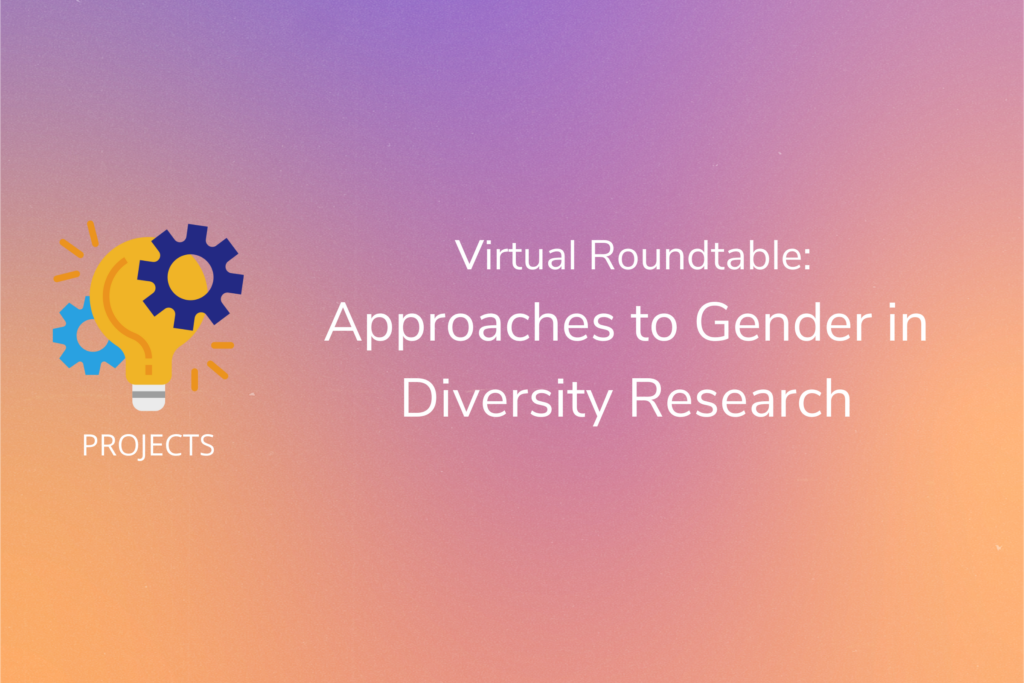In this first part of the virtual roundtable, Hanna Szabó and Ana-Nzinga Weiß discuss how to define and approach gender in research with Dr. Harriet Tenenbaum (University of Surrey), Prof. Yvonne Benschop (Radboud University), Prof. Peter Hegarty (The Open University), Prof. Margreth Lünenborg (Freie Universität Berlin). The second half of this discussion can be watched here.
In the 1970s gender research introduced the differentiation between gender and sex. Gender was regarded as the social classification into masculine and feminine that can differ among different cultures and societies. Sex, on the other hand, was used to refer to the biological differences between subjects classified as men and women. While this differentiation helps to reveal versatile gendered norms and practices, it still views sex as biological and essential.
Critics of this differentiation opposing essentialist views emphasize that both, gender and sex, are social constructions that are influenced by different scientific and cultural discourses. Based on such a perspective, is for example the claim that gender predetermines sex contrasting accounts of biological sex that predetermines gender.
How do you define and approach gender in your research? Let us know in the comments.
References:
Connell, R. W. (1987). Gender and power—Society, the Person, and Sexual Politics. Polity Press.
Lugones, M. (2010). Toward a decolonial feminism. Hypatia, 25(4), 742–759.
Lünenborg, M., & Maier, T. (2013). Gender Media Studies. Eine Einführung. UVK Verlagsgesellschaft mbH mit UVK/Lucius.
Oakley, A. (1985). Sex, gender and society. Gower/ Maurice Temple Smith.

What’s on TV? The role of gender and social status in media representation (Germany)

I have read your excellent post. This is a great job. I have enjoyed reading your post first time. I want to say thanks for this post. Thank you…
Cool stuff you have and you keep overhaul every one of us